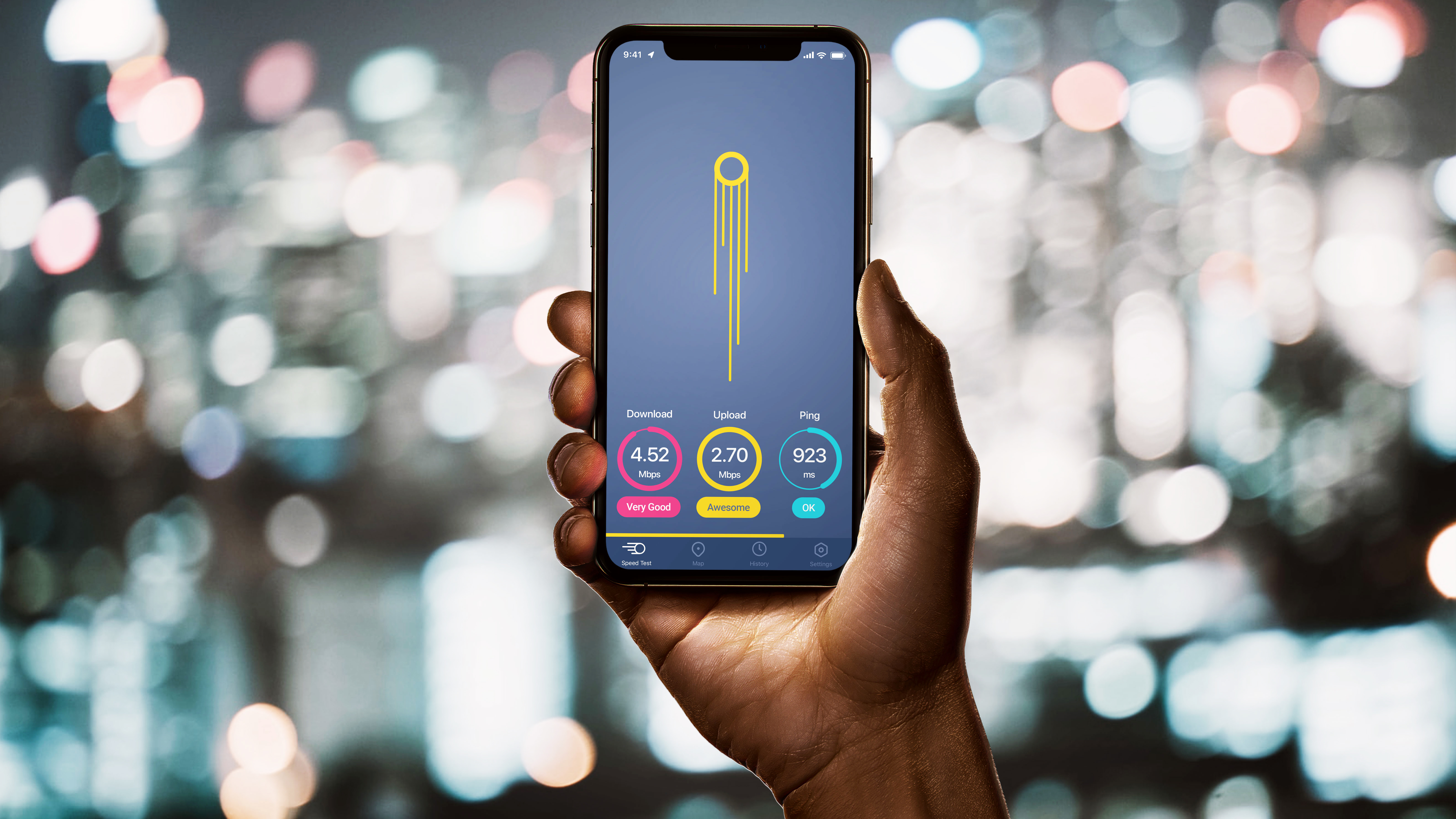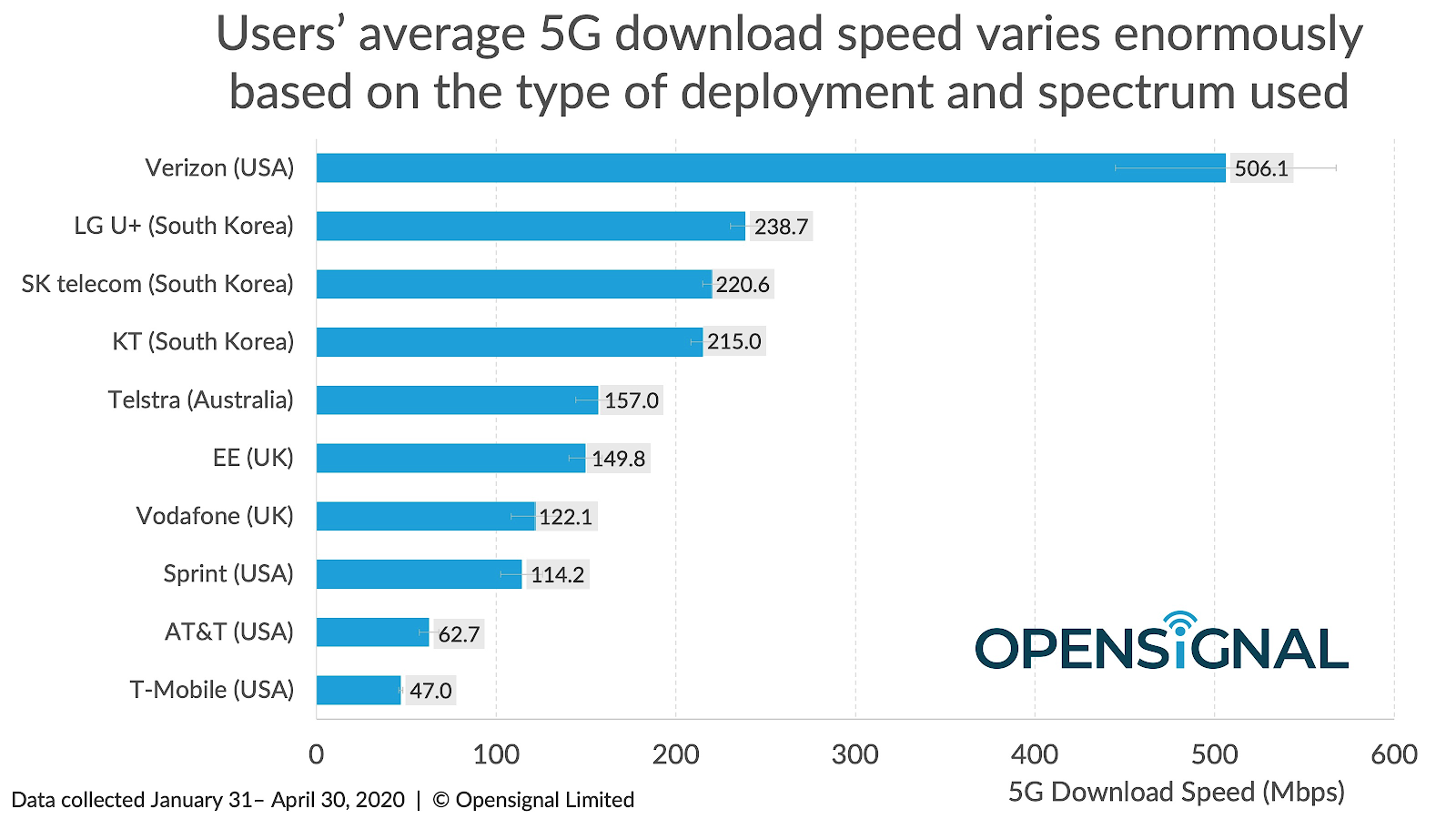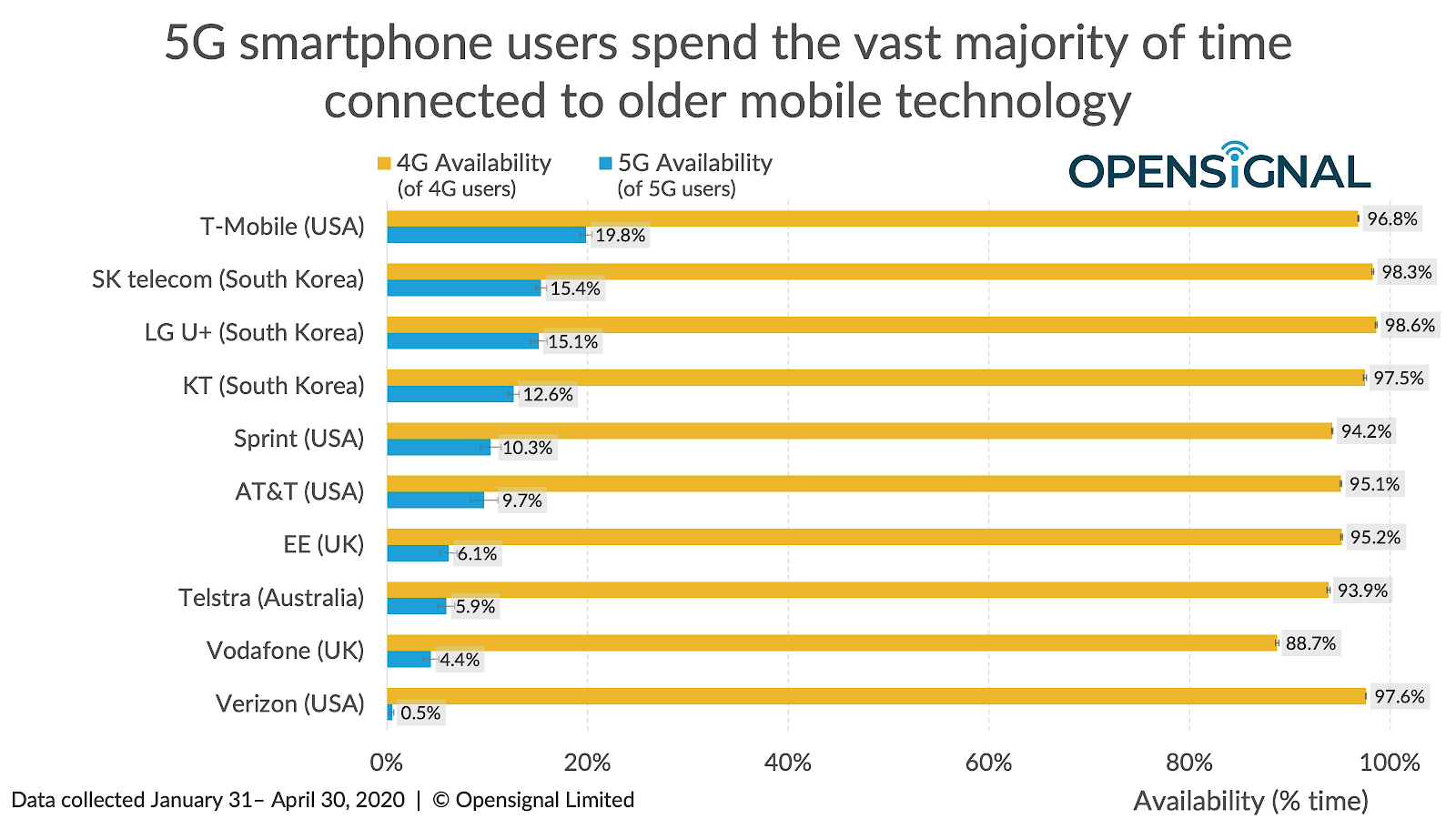Verizon 5G is 390Mbps faster than the closest US network
In a review of 10 leading 5G network speeds around the world, Verizon took the top spot, trouncing the competition. But availability was another story.

With mobile network operators selling different 5G services operating across low, mid, and high-band spectrum, the level of service that customers can expect varies a great deal, and a new report from mobile testing company, Opensignal, has compared 5G speeds across the US, UK, Australia, and South Korea.
Opensignal looked at how the 5G experience compares in four countries, across 10 5G operators, all of which launched 5G services over six months ago. And the results revealed that one company is head-and-shoulders above the competition: Verizon.
In Opensignal’s 5G analysis all 10 operators saw much faster speeds for their users on 5G compared with 4G, with speeds between 18.4 times and 1.7 times faster on 5G. But there was a massive variation in the average 5G download speeds for each operator, with results ranging between 506.1Mbps on Verizon, down to 47Mbps on T-Mobile US.

The time that users spent connected to 5G also varied greatly between operators, with the top network being T-Mobile US, at 19.8%, which illustrates that the company – as it has stated – is focussed on getting the broadest possible coverage, whereas Verizon gets bragging rights over the fastest connection, thanks to its commitment to high-band mmWave 5G.
Of the ten operators Opensignal analyzed, Verizon was the only one to exclusively use mmWave spectrum, which accounted for its extremely high 5G speed. Conversely, the two operators with the slowest 5G speeds primarily relied upon low-band spectrum re-purposed from 4G services — 600Mhz for T-Mobile US and 850Mhz for AT&T — which offered extremely good coverage, but less capacity and slower average speeds.
All the other operators on test relied on mid-band spectrum for their 5G services, according to Opensignal. Although Australia’s Telstra, all three of South Korea’s operators, Sprint in the US, and EE and Vodafone in the UK, have all deployed 5G on mid-band spectrum, speeds differed greatly, from well over 200Mbps on all three Korean operators, to 114.2 Mbps on Sprint.
Spectrum availability
A major reason for these broad results is down to the amount of available spectrum in each country, and each network operators spectrum allocation. When it comes to spectrum, wider channels are better – ideally, 100Mhz in a single 5G band — but there were other factors, too, such as the capacity of the onward connection from each cell site and core network performance.
SIGN UP FOR E-MAIL NEWSLETTERS
Get up to speed with 5G, and discover the latest deals, news, and insight!
When reviewing the results, it’s important to remember that speed is just on factor, when it comes to measuring your 5G experience.

And T-Mobile US can take a lot of heart from the fact that its users spent the most time connected to 5G globally, with availability at 19.8% (followed by all three South Korean operators, ranging from 15.4% to 12.6%). In contrast, Verizon's 5G connectivity came in at under one percent.
- Discover the best 5G networks in the UK and US
- Get your hands on the hottest 5G phones
- Millimeter wave: the secret sauce behind 5G
- The complete guide to 5G security
- We reveal the latest 5G use cases
- Discover the truth behind 5G dangers
- 5G towers: everything you need to know
Dan is a British journalist with 20 years of experience in the design and tech sectors, producing content for the likes of Microsoft, Adobe, Dell and The Sunday Times. In 2012 he helped launch the world's number one design blog, Creative Bloq. Dan is now editor-in-chief at 5Gradar, where he oversees news, insight and reviews, providing an invaluable resource for anyone looking to stay up-to-date with the key issues facing 5G.

